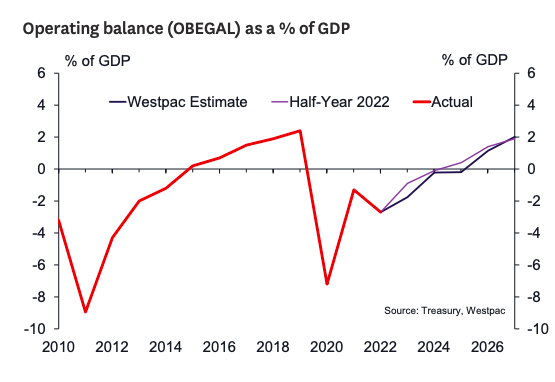The bank's economic forecasts relative to the half-year update are more pessimistic, economist says

Westpac is expecting Budget 2023 to show a moderate deterioration in New Zealand’s fiscal position compared to the half-year update.
In Westpac’s latest publication, Nathan Penny (pictured above), senior agri economist, said the bank has taken the recent government announcements of a “no-frills budget” at face value and factored only limited additional spending focused on alleviating cost-of-living pressures and fast-tracking recovery from Cyclone Gabrielle.
“Our economic forecasts relative to the Treasury’s at the half-year update are more pessimistic,” Penny said. “We have then flowed this through to a lower tax revenue outlook. Indeed, the accounts are already behind what was forecast at the half-year update – total government revenue is $2.9bn behind forecast for the nine months to March 2023.
“As a result, we expect the operating balance (OBEGAL) to tick over into surplus one year later than previously signalled i.e. in 2025/26. Notably, though, the government still meets its fiscal rules of running small surpluses allowing for economic conditions.”

To get there, the bank economists said the government should “run a tight ship” – that means no increases to the budget allowances, including potential “election sweeteners.”
The economists were also expecting the larger deficits to translate to a modest lift in the net debt forecasts.
“That said, it will be more modest than the increase in deficits alone,” Penny said. “Net debt will start the forecast period lower than forecast as the New Zealand Superannuation Fund has made some large investment gains since the half-year update.
Market interest, meanwhile, is predicted to be on the size of the bond programme.
“Overall, we expect an increase of $12bn over the five-year forecast period relative to the half-year update,” Penny said. “Circa $10bn of this increase reflects the increase in the forecast deficits resulting from reduced growth assumptions. We have also allowed for a small increase in borrowing ($2bn) to fund infrastructure costs relating to the cyclone recovery.”
Click here to read the full report.
Use the comment section below to tell us how you felt about this.



